BIG opens Copenhill power plant topped with rooftop ski slope in Copenhagen
BIG has completed the "cleanest waste-to-energy power plant in the world" in Copenhagen, Denmark, which is topped by an artificial ski slope that is open all year round.
CopenHill, also known as Amager Bakke, is a power plant located on an industrial waterfront that is capable of converting 440,000 tons of waste into clean energy annually.
It was designed by BIG to double as public infrastructure, and is complete with tree-lined hiking trails and ski slopes on its roof along with the "tallest artificial climbing wall in the world" on its facade.
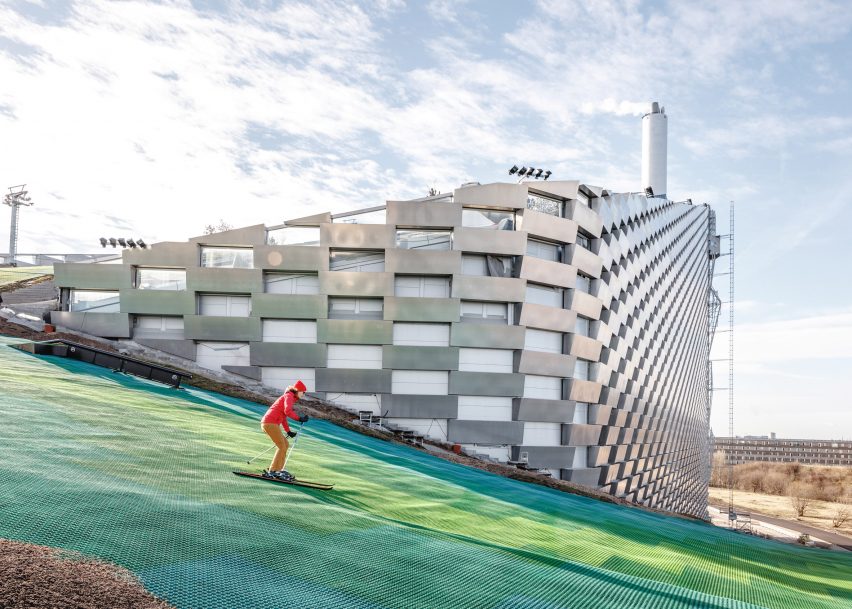
"CopenHill is a blatant architectural expression of something that would otherwise have remained invisible: that it is the cleanest waste-to-energy power plant in the world," said Bjarke Ingels, founder of BIG.
"As a power plant, CopenHill is so clean that we have been able to turn its building mass into the bedrock of the social life of the city – its facade is climbable, its roof is hikeable and its slopes are skiable" he continued.
"A crystal clear example of hedonistic sustainability – that a sustainable city is not only better for the environment – it is also more enjoyable for the lives of its citizens."
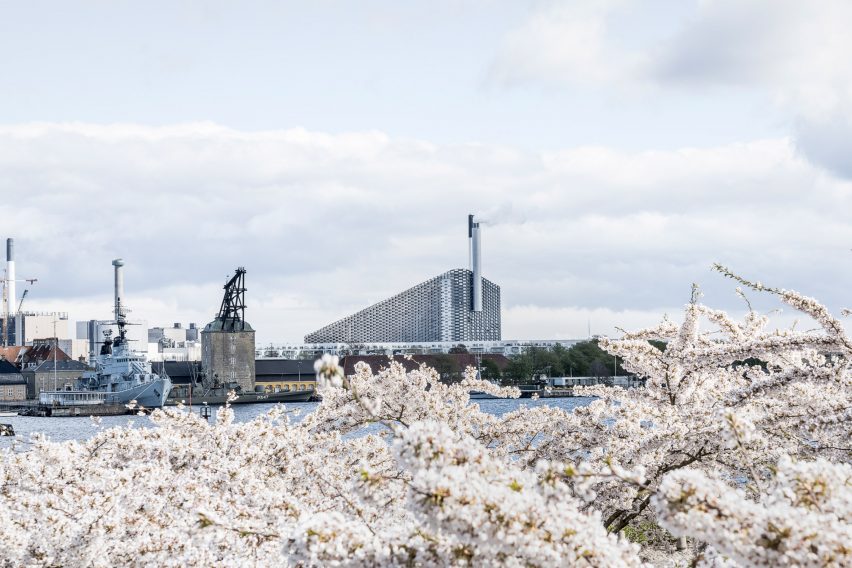
The design for the 41,0000-square-metre CopenHill "ski plant" won an international competition in 2011, with the building breaking ground two years later. It is hoped the building will help Copenhagen meet its goal of becoming the world's first carbon-neutral city by 2025.
Copenhill is distinguished by its wedge-shaped form, sloped green roof and blocky facade composed of 1.2-metre-tall and 3.3-metre-wide aluminium bricks that are stacked like gigantic bricks.
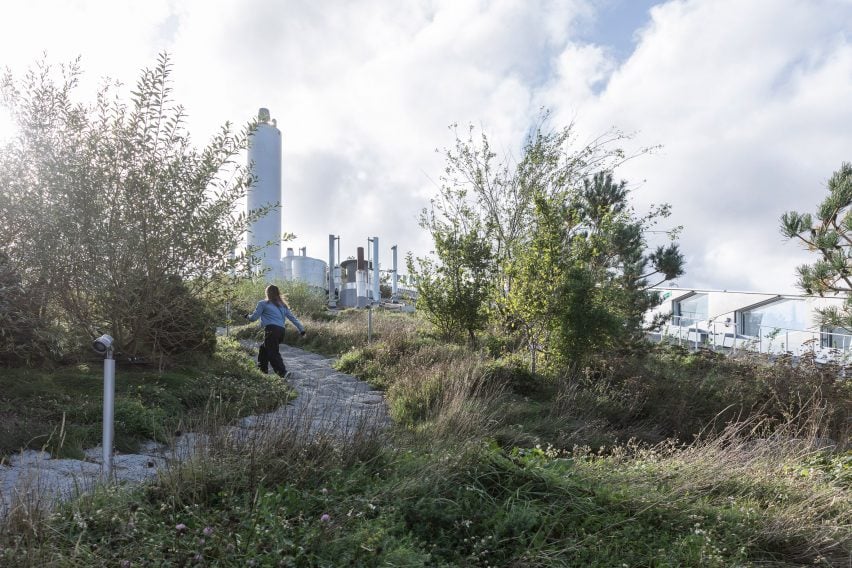
Inside it is filled with "the latest technologies in waste treatment and energy production", capable of incinerating 440,000 tons of waste to make clean energy that will deliver electricity and district heating for 150,000 homes annually.
This machinery is all arranged in height order, which forms the building's sloped rooftop and resulting 9,000-metre-squared ski terrain.
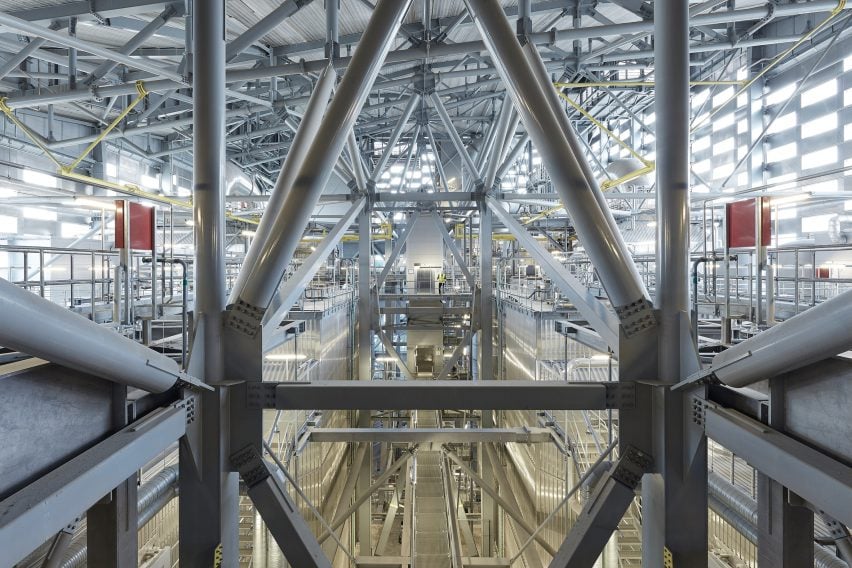
CopenHill's ski slope measures 400 metres, and runs from the top of the 90-metre-high building to its base, with a 180-degree turn halfway down the piste.
Visitors ascend it via a platter lift, carpet lifts and also a glass elevator that offers a glimpse inside the plant.
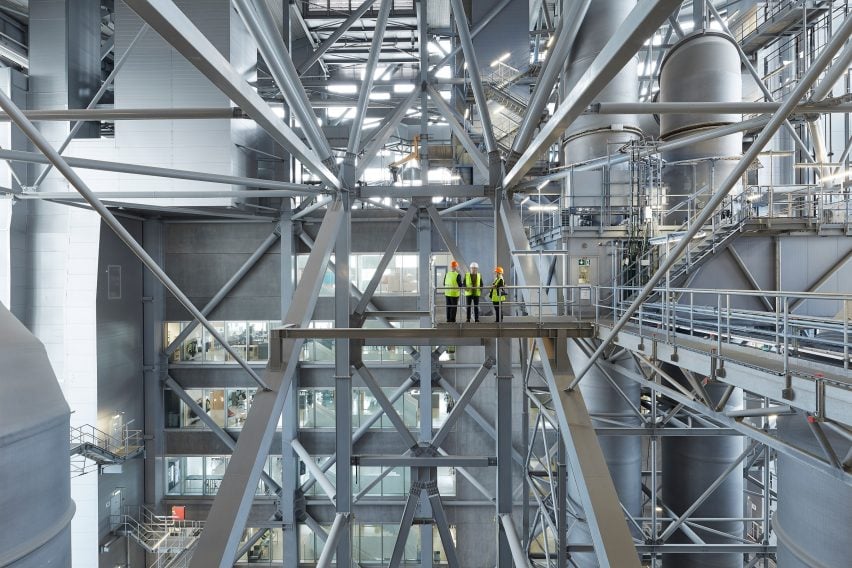
The building also welcomes non-skiers – incorporating a rooftop bar, cross-fit area, 85-metre-high climbing wall and 490-metre-long hiking and running trail within a "lush" garden.
This "garden" is designed by collaborators SLA Architects, and is hoped to created a "vibrant green pocket" in the city for birds, bees and flowers, while absorbing heat, remove harmful air particles and minimise stormwater runoff.

CopenHill is complete with ten floors of administrative space and a 600-metre-squared education centre for academic tours, workshops and sustainability conferences.
These are all naturally lit by glazing that slots in between the aluminium bricks.
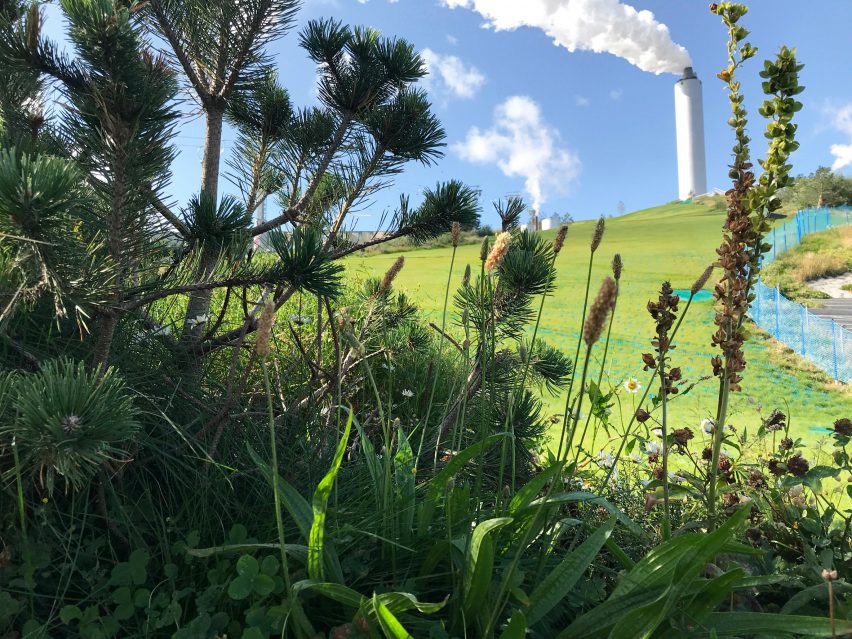
"To me CopenHill is a perfect example of the world changing power of architecture. That we have the power to give form to the future that we want to live in," concluded Ingels.
"Standing at the peak of this human-made mountain that we have spent the last decade creating – makes me curious and excited to see what ideas this summit may spark in the minds of future generations."
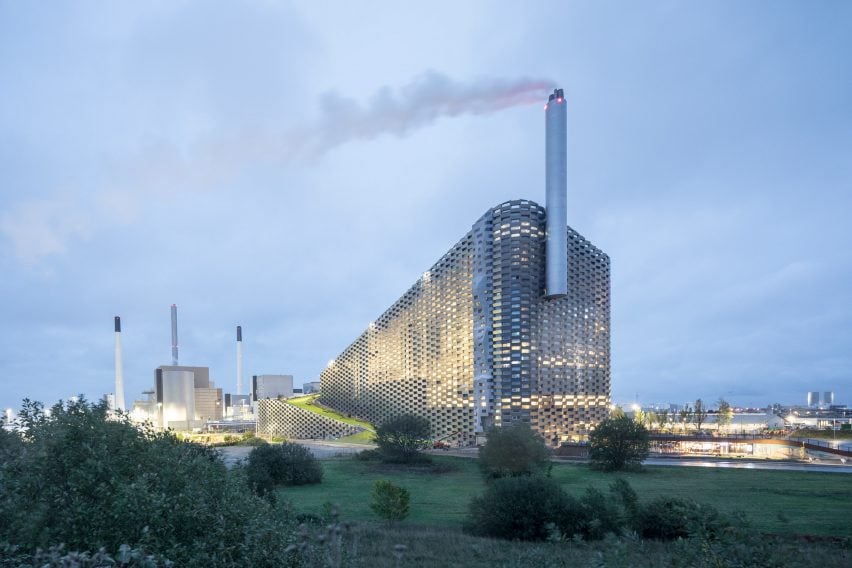
The building's original design incorporated an art work in the chimney, which would release a ring of vapour every time 250 kilograms of carbon dioxide is released into the atmosphere. According to the studio this art installation will be added to CopenHill when funding is secured.
Other recent projects by the studio include a twisting art gallery that bridges a river in Norway and a looping cultural centre in Bordeaux.
Photography is by Rasmus Hjortshoj, unless stated.